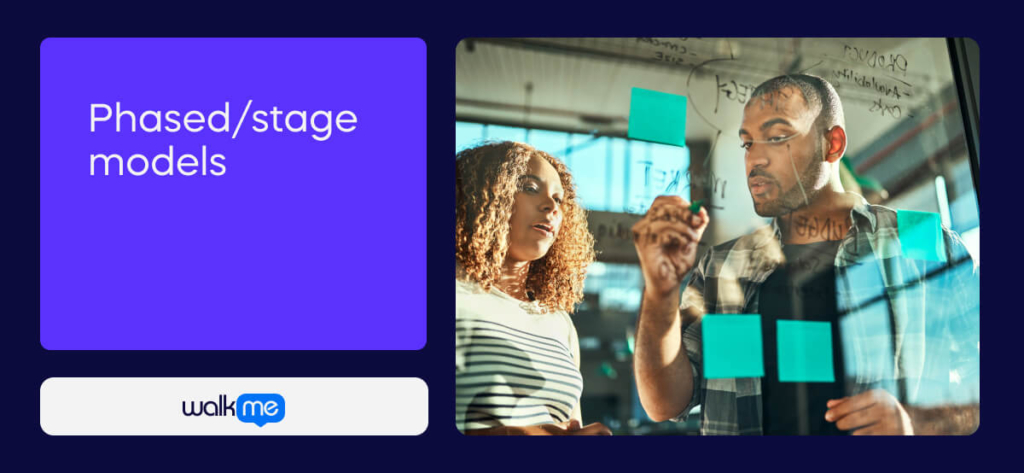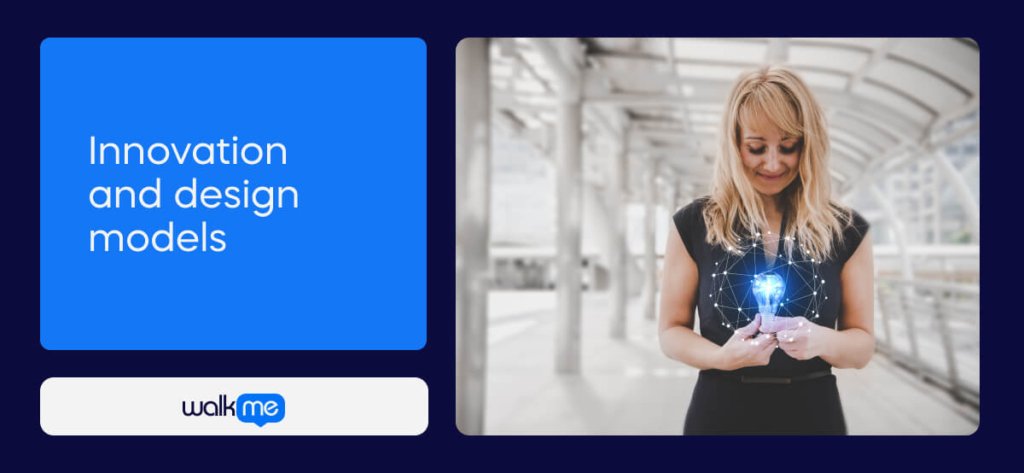When a company starts digital transformation, it adopts new tools. The goal is to improve efficiency, processes, and the customer experience.
But, digital business transformation is a complex undertaking. Without a well-thought-out plan, it can be challenging to manage effectively. That’s where digital transformation models come in.
They outline steps for adapting to changes in the business environment. This structured approach increases the chances of achieving better outcomes.
This article will help you understand the eight main digital transformation models. Each model provides a unique framework for approaching digital change. We will also look at five businesses that have navigated digital transformation. These examples will show you how to apply digital transformation and what it can achieve.
1. Strategic models
These models focus on developing a strategy for digital transformation and keeping it in line with long-term business goals.
Example: McKinsey’s six building blocks
Each pillar is critical to achieving business readiness.
McKinsey’s Six Building Blocks framework exemplifies this approach.
It breaks down digital transformation into six essential components:
- Align digital strategies with business goals to stay competitive
- Improve customer experiences by refining key interactions
- Automate processes to increase efficiency and focus on valuable tasks.
- Build agile teams with a digital mindset.
- Create scalable IT systems using AI and cloud technology.
- Use data to make better decisions and offer personalized experiences.
2. Phased/stage models

These models break down digital transformation into stages, each with specific goals.
Example: Altimeter’s six stages of digital transformation
In this scenario, digital transformation happens in stages. Each has its specific goals and deadlines.
The usual steps are:
- Assess: Review current digital tools and set new goals.
- Plan: Develop a clear strategy and decide which tasks to focus on.
- Implement: Begin the digital projects.
- Optimize: Improve and adjust the solutions as needed.
- Scale: Expand successful projects across the entire company.
For example, a company might start by improving data use. They’d review customer data and create a central database. Planning involves choosing the right system and making a communication plan. They’d also set up a team to manage changes.
Next, they start the project on schedule. Feedback helps refine the system. If it’s successful, they can apply the same approach to other areas like boosting sales.
3. Capability and maturity models
These models evaluate the organization’s digital maturity and guide improvements.
Example: Capability maturity framework
A capability maturity framework helps companies focus their digital transformation. It assesses maturity levels in areas like data use and technology adoption.
Stage 1: Beginner: These companies are at the beginning of their digital journey. They need better collaboration and a better use of data.
Stage 2: Developer: Here, teams begin sharing data, automating tasks, and improving operations. But some inefficiencies remain.
Stage 3: Collaborator: All parties share data across the company, guiding decisions. Teams work together, focusing on using data to capture opportunities.
Stage 4: Continual Improver: This company focuses on ongoing improvement and growth. It has collaborative teams and constantly evaluates processes to boost efficiency.
4. Innovation and design models

These models emphasize innovation, creativity, and user-centered approaches to drive digital transformation.
Example: Design thinking model
It uses new processes and technologies to stay flexible and competitive. A key example is design thinking, which focuses on understanding customer needs.
The process has six steps:
- Define the challenge: Identify your customers’ main needs.
- Seek inspiration: Observe and discover real-world needs.
- Brainstorm ideas: Think of creative, outside-the-box solutions.
- Develop prototypes: Build and test early versions of your ideas.
- Learn from testing: Use feedback to improve.
This process ensures innovations match customer desires, not only data or instinct.
5. Operational and process models
These models focus on optimizing and transforming operational processes through digital technologies.
Example: Lean transformation model
The goal is to improve efficiency and remove unnecessary steps. Kanban is a tool that helps manage tasks by showing their status.
Today, Kanban is often used online, making it easy for the whole team to see a project’s status. Everyone can see where a task is, who worked on it last, and what needs to happen next. Kanban started at Toyota to communicate needs between departments.
A team working on a digital project might use Kanban to stay organized. They might use a simple whiteboard with columns. You can label these as ‘To Do,’ ‘Doing,’ and ‘Done’ (Waiting, In Progress, and Complete). Tasks can move through these columns as they progress. This allows team members to track updates without frequent meetings.
6. Domain-specific models
These models focus on transforming specific business domains. You can also use it to enter new markets through digital means.
Example: Business domain transformation
Business domain transformation involves a company expanding to new markets. This helps companies innovate and adjust to changing conditions.
For instance, a casual clothing company could start renting designer outfits. This new rental service would fit the store’s brand but target a different customer need.
To improve this new service, the store could use AI to suggest outfits based on what customers like. This would make renting clothes more personalized and easier.
Another example is a company that created software to improve its own processes. If it starts selling it, it will become a new income source and help others with the same technology.
In both examples, companies are moving into new areas to grow and succeed.
7. Taxonomy and framework models
These models categorize various aspects of digital transformation into specific taxonomies or frameworks.
Example: Taxonomy-based model
Categories include:
- Business impact: Cost reduction, revenue growth, or customer satisfaction.
- Technology domain: Cloud computing, AI, or the Internet of Things.
- Organizational function: Marketing, operations, or HR.
- Level of innovation: Small improvements to major changes.
This approach helps companies pick which projects to start based on their benefits.
For example, if a company gets customer complaints, it must focus on business impact. They would first analyze the complaints and set goals, such as faster response times.
Next, they would gather feedback from the customer success team and train employees to handle complaints better.
As they progress, they might focus on other areas, like using AI to improve customer service.
8. Lifecycle and evolution models

These models view digital transformation as a continuous process with distinct lifecycle stages.
Example: Lifecycle evolution model
This model guides companies through stages to keep improving.
These stages are:
- See the need for digital change and tell everyone.
- Plan and start the first digital projects.
- Grow what works and build digital skills.
- Get better at digital tasks across the company.
- Keep up with new tech and market changes.
This practice also helps companies stay current with digital tools. For example, a company might start using AI for payroll. Later, it could use AI to write sales notes. Then, it might use AI to suggest products to customers based on what they bought before.
Implementing digital transformation models: success stories
Here are some companies who’ve used digital transformation models well:
1. Lego’s digital company transformation
After COVID, Lego had to change its physical stores. They kept people safe with masks and space rules. They added fun new things in store for grown-ups, like a table that tells stories.
They also made a place where people can make Lego figures in their likeness.
Lego’s new ideas help four groups: buyers, shoppers, business friends, and workers. They have also built online platforms for kids and adults, which help families and friends build Lego together.
2. DHL supply chain evolution
DHL uses new tech to work smarter. It tracks packages throughout the journey and gives updates right away. This helps DHL find the best routes and check things like temperature.
DHL also uses advanced technology to automate logistics. This helps move things faster and safer.
It further advanced operations with data analytics and machine learning, which helps DHL respond quickly to changes. They can also split up work and do tasks without people.
All this new tech makes DHL’s work better. It also helps keep workers happy, so fewer people quit.
3. Sephora’s customer experience revolution
Sephora makes shopping better with new tech. Their app has smart tools to help customers. You can try on makeup without really putting it on, and you can also share your looks online.
The app shows how makeup looks on a virtual face before you buy it. You can even smell perfumes without spraying them. There’s also a test to find makeup that suits you.
Sephora has a rewards program, too. Customers play fun games to earn points, which helps Sephora learn what people like. Then, Sephora can make shopping more personal for each customer.
4. IKEA’s omnichannel strategy
IKEA uses new tech to work better and help customers in person and online.
They use smart robots and drones to count what’s in stores. By 2023, IKEA had over 100 drones in 16 places in Europe. Drones can help you understand what’s in stock and where to put things.
IKEA also made a smart helper for shopping online in 2024. It tells customers if items are in stock and helps you buy them.
IKEA cares about the earth, too. They buy back old furniture from customers and then sell it again as used items. This innovative practice helps less stuff go to waste.
5. Disney’s shift to streaming services
COVID-19 made Disney change its plans. It started Disney+, a new streaming service. Disney+ did well, so the company made it a big focus. They worked hard to make Disney+ better than other streaming sites.
More people started watching Disney+, even with new rivals. Streaming helped Disney work better and keep up with others. Disney bought 21st Century Fox for $71.3 billion, which strengthened Disney. Now, Disney keeps growing around the world.
Opt for the digital transformation model that is right for you
Digital transformation is key to staying competitive, improving customer experience, and boosting operations. It also drives innovation and helps adapt to market changes. Choosing the right transformation model is crucial. It should fit your organization’s specific needs and goals.
Consider factors like your organization’s digital maturity, business goals, and readiness for change. Resources such as money, technology, and staff also affect the process.
Your current technology and the new technologies will influence your strategy. The aim is to pick a model that meets current needs and supports future growth. Digital transformation should be an ongoing journey, not a one-time project.
Base your strategy on customer needs and expectations. This keeps your company focused on the customer and competitive. Successful transformation should be flexible and scalable.
FAQs
Digital transformation models guide businesses in adopting new technology across all areas. They provide steps to improve company operations and customer service. The focus is on changing the business’s functions, not just adding new tech.
Digital transformation models are important as they help you choose the best plan for your business. The choice depends on your business size, type, and needs. Each model has its methods, benefits, and risks.
To choose the right digital transformation model, assess your business needs, industry specifics, and employee skills. Craft a strategy that fits your culture, resources, and budget. Ensure the model is scalable, adaptable, and complies with regulations while prioritizing cybersecurity.
The biggest challenges to implementing a digital transformation model include resistance to change, siloed decision-making, a digital skills gap, and an insufficient budget.
Digital transformation timelines vary based on project size and complexity. Large organizations with outdated systems often need 3-5 years, while smaller or more modern setups may take less time.
Cultural resistance can also affect the timeline. Breaking the project into phases can help speed things up.

